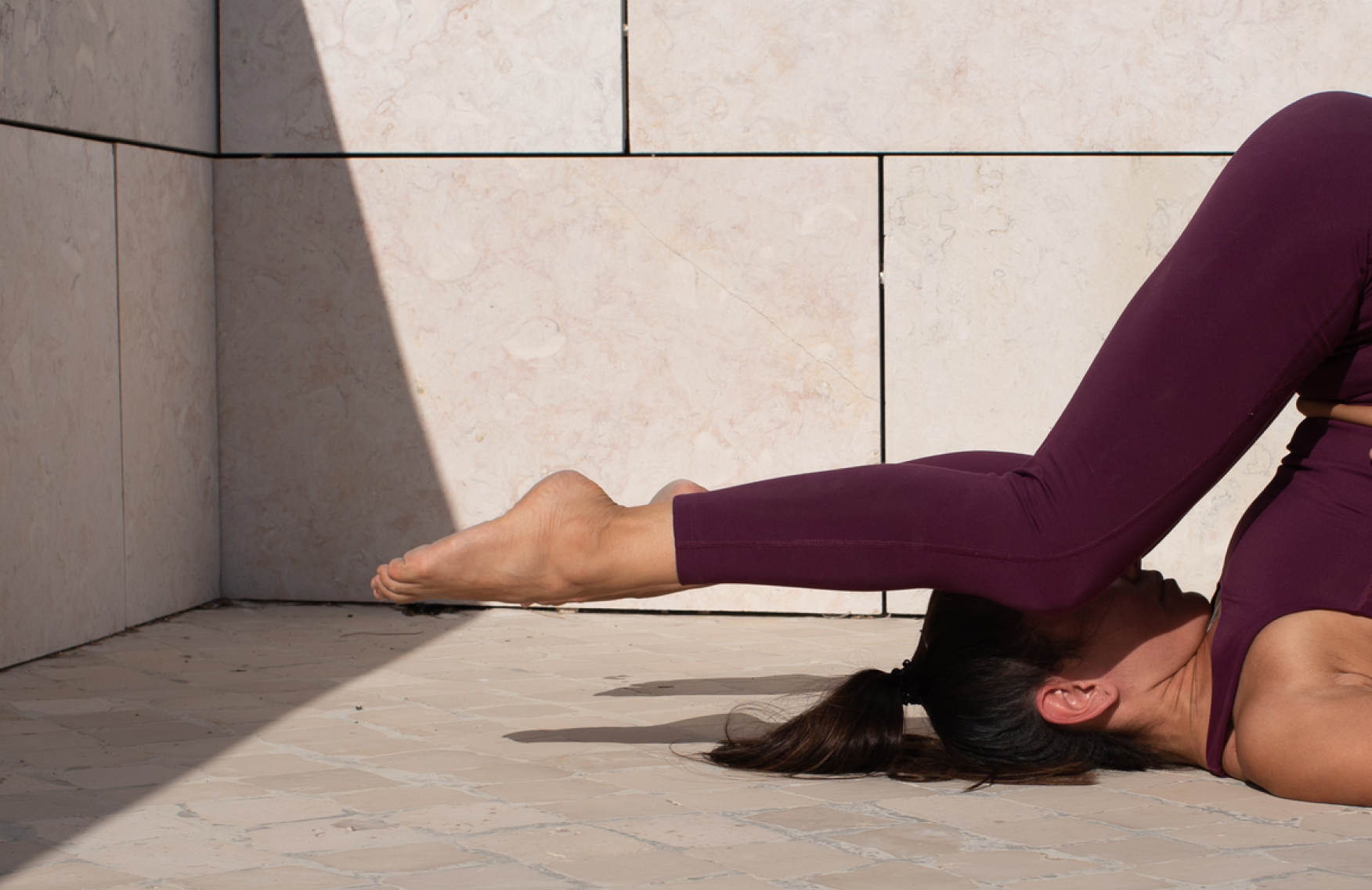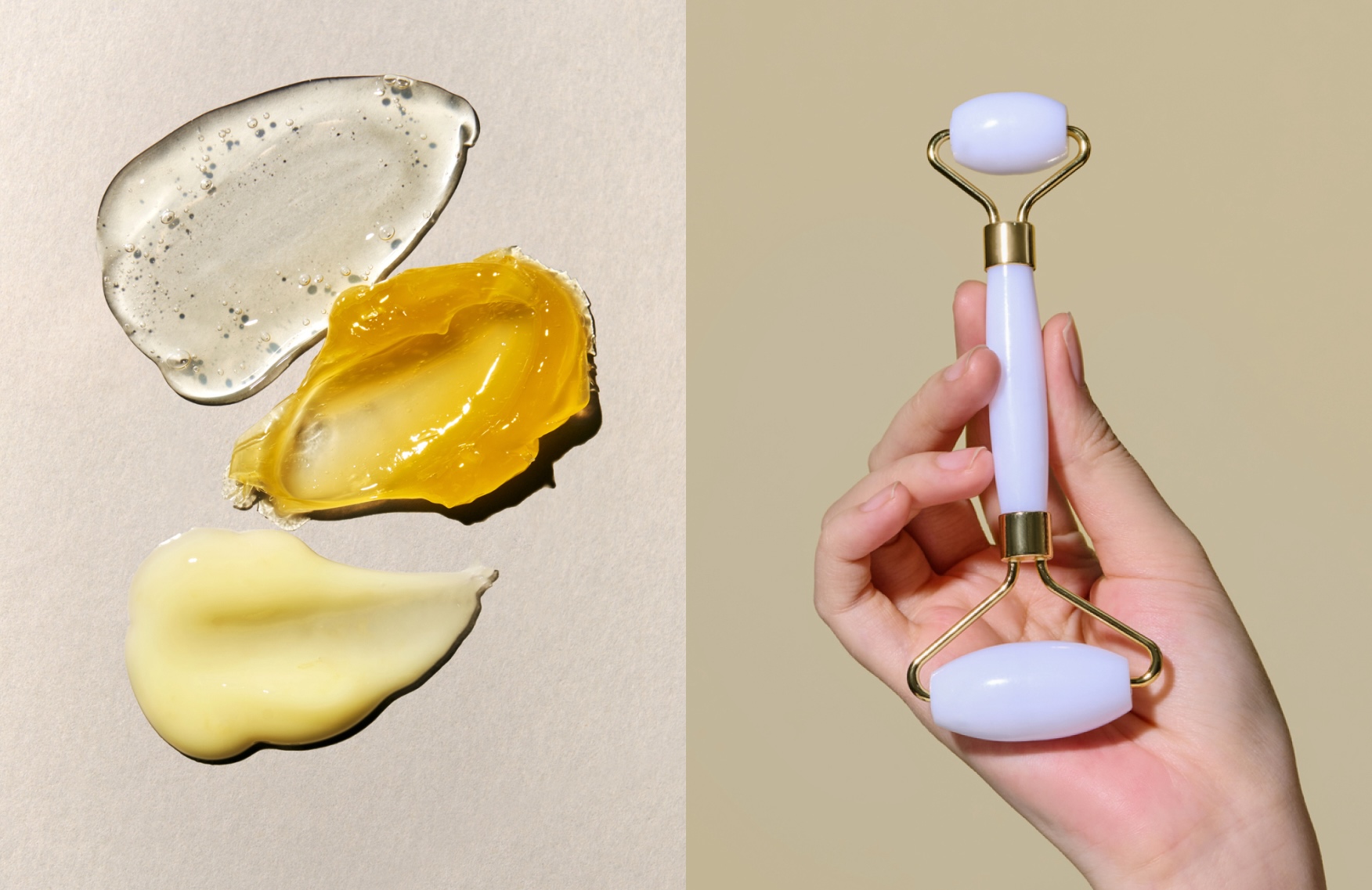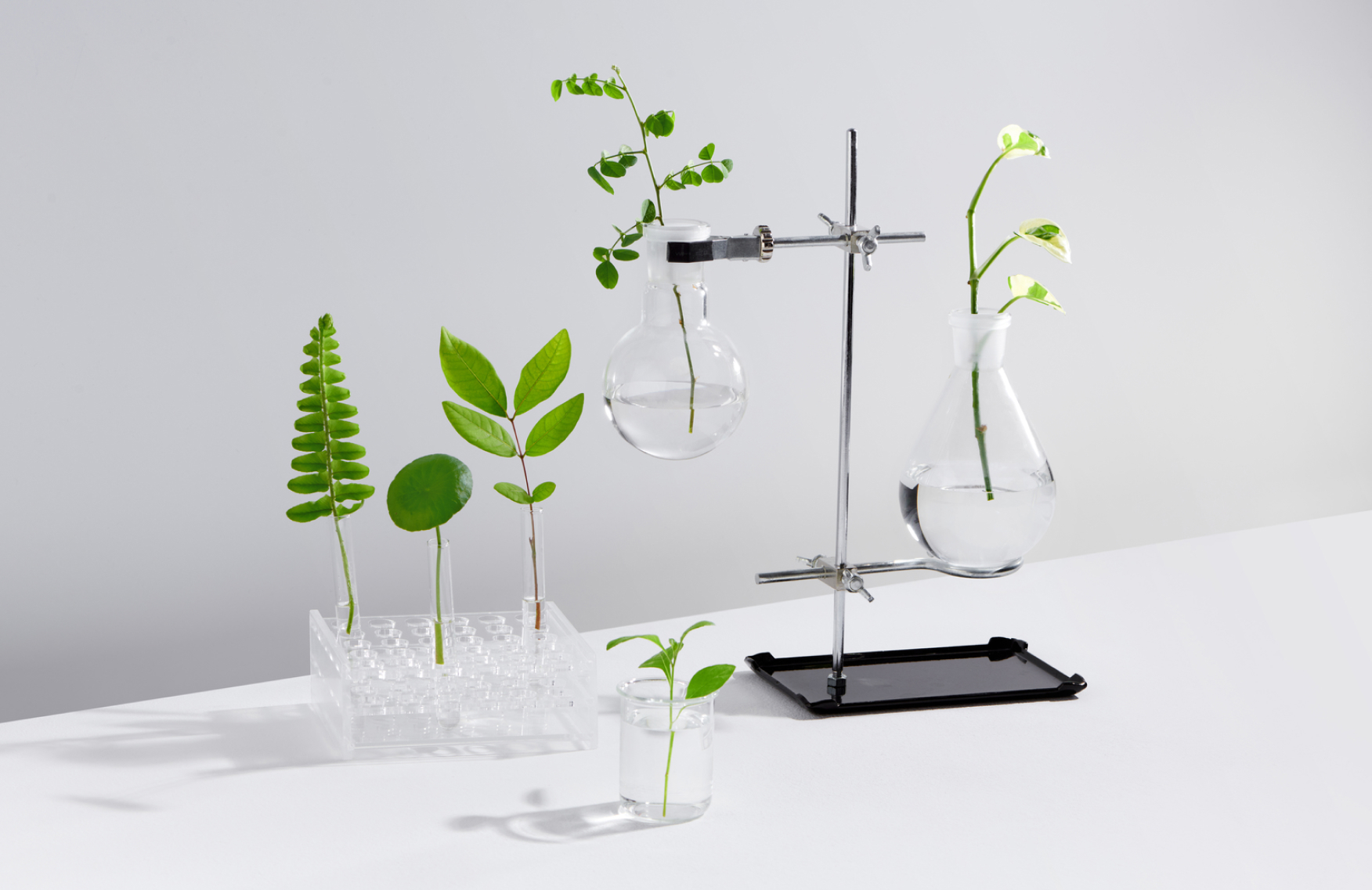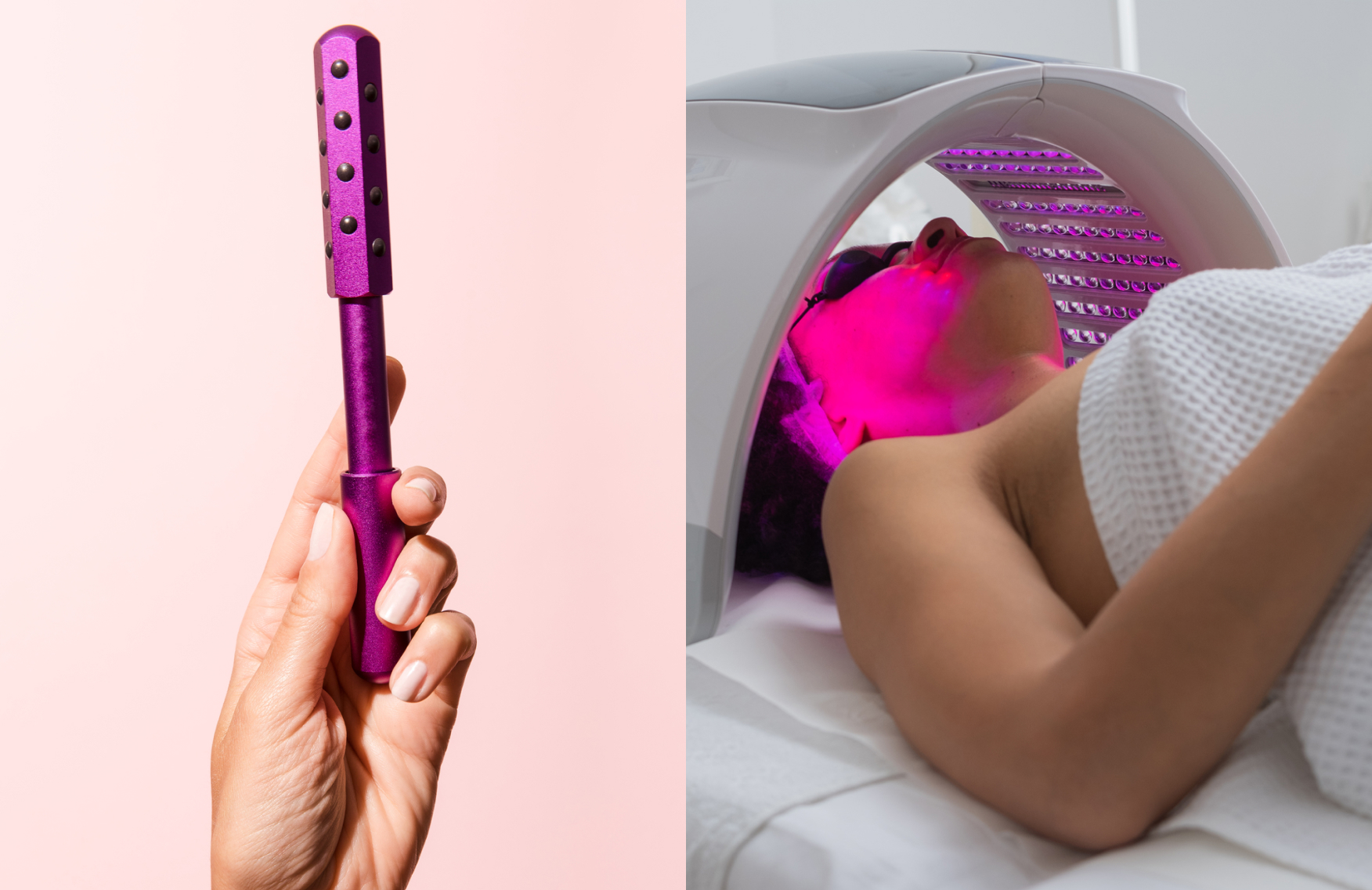Yin for better skin? The benefits of slowing your flow

Yin yoga – if you know you know. In contrast to heat-building, muscle-conditioning yang yoga, yin yoga is like taking an emotional and physical chill pill. Its tenets include easing into, holding and deepening each pose, inviting in stillness and encouraging the mind to check out and check in with the self.
Naturally, we wanted to find out if yin yoga had any benefits beyond mental and emotional health. Is there any way yin could be the stealthy secret to smooth, youthfully hydrated skin?
We checked in with two experts: Kamellia Sara Mckayed (who has 500-hours of yoga teacher training under her belt, in addition to founding Do.omyoga and Soundtemplestudio) and Dr. Stephanie Minchin, a clinical psychologist, yoga therapist and yoga teacher who founded The Yoga Psychologist and House of Yoga. Their answers left us wanting to slip into and hold our favorite asana.
But first, an explanation of the difference between yang yoga and yin yoga
In Chinese philosophy, yin-yang embraces contradictions as a necessity—think freezing versus hot; high versus low. Even taiji, the famous black and white yin-yang symbol, demonstrates the essential connectivity of contradictions in the name of balance.
“In yoga, a yang-type practice may be more dynamic, flowing with sequential postures and energizing (think the ever-popular vinyasa), whereas yin yoga is static and still, with longer-held asanas (yoga postures),” Minchin says. Both practices activate different elements of our body yet work together: Yang builds heat to activate muscles, while yin maintains a cooler, basal body temperature and activates fascia.
What are the whole-body benefits of activating fascia?
Muscles may be the force behind movement, but fascia is what makes movement possible. And neither can exist without the other (read: taiji). “Fascia is responsible for anything from involuntary blinking to lifting weights,” Mckayed explains. When fascia gets tight or stiff, mobility is limited, and stiffness and pain take over. Not surprising, these are increasingly common aliments for our desk-jockey and computer-dependent lifestyles.
What does fascia have to do with relieving skin stress?
“There are ten times more sensory receptors in fascia than in muscle tissue,” says Minchin. Fascia’s elevated sensory receptors means it has its own “emotional memory”, like tensing when you’re stressed. Mckayed adds, “Increased negative, chronic stress can trigger the overproduction of stress hormones like cortisol, and high levels of cortisol contribute to inflammation, collagen breakdown and accelerated skin aging.”
Minchen tells us, “Yin yoga holds different postures for longer periods of time (anywhere from 1 to 8 minutes) to encourage deep fascia release, which slows the sympathetic nervous system (stress response) and encourages the parasympathetic nervous system (relaxation response) to kick in.”
Mckayed adds, “By reducing stress hormone levels and promoting a sense of calm and relaxation, yin-supportive practices may help slow down the aging process and maintain skin health.”
How does yin yoga enhance skin health and combat signs of aging?
While yin yoga primarily targets deeper connective tissues rather than the skin directly, the overall improvement in hydration and circulation facilitated by the practice can positively impact skin health. “As skin is the body’s largest organ, what is happening on the outside of the body is a direct reflection of what is happening on the inside,” Minchin says.
In addition to encouraging introspection and reflection for stress relief (which ultimately helps pump the brakes on skin-aging cortisol), “Sustained stretching of fascia connective tissues stimulates fibroblasts—the cells responsible for producing hyaluronic acid,” Mckayed says.
Hyaluronic acid keeps our skin and joints healthy and lubricated—yet depletes as we age. Encouraging hyaluronic acid production is critical to long-term health for the entire body. “Hyaluronic acid is well-known for its skincare benefits,” Mckayed says. “It helps retain moisture in the skin, promotes firmness and elasticity, and contributes to a smooth, radiant complexion and more youthful and vibrant appearance.”
Does yin yoga help with firming and tightening of skin?
“While yin yoga can be beneficial for promoting flexibility, relaxation and joint health, it may not directly address issues of firmness or muscle tone in the same way that dynamic or strength-based forms of yoga do,” Mckayed tells us. “However, incorporating yin yoga into a well-rounded fitness routine that includes both flexibility and strength training can help can support overall body tone and vitality.”
What are some postures that support fascia release and blood flow that can encourage skin health?
Like all forms of exercise, don’t start anything new until you speak with your doctor. This is especially true if you’re pregnant or have any pre-existing conditions. Yin may seem like fancified stretching, but holding asanas for a prolonged period may exacerbate health concerns.
Once you get the all-clear from your doctor, our experts recommend the following yin poses to nourish your skin and feed your soul—all in the name of skin health—and better well-being overall.
Yin poses for skin health
- Sphinx pose (Bhujangasana): This gentle backbend that elongates the spine and opens the chest. It can help improve circulation to the abdomen, chest and upper back
- Seated forward bend (Paschimottanasana): This seated forward fold stretches the entire back body, including the spine, hamstrings and calves. Folding forward compresses the abdominal organs, which can stimulate blood flow to the digestive organs—a process that can enhance oxygen delivery and expel toxins and waste
- Legs up the wall pose (Viparita Karani): It’s not one of the traditional yin poses, but this restorative inversion promotes relaxation and helps improve blood circulation to the legs, pelvis and lower abdomen
- Child’s pose (Shishuasana): This restful, healing pose often comes as a relief to the more intense yin and yang asanas, but it’s beneficial to the digestive organs and can be emotionally soothing when feeling vulnerable—ultimately mitigating stress that can stimulate cortisol release. Moving side to side while in child’s pose can also stimulate skin-healthy blood and lymphatic flow
The views expressed in this article do not necessarily represent the views of Murad, and are for informational purposes only, even if the advice of physicians and medical practitioners are included. This article is not a substitute for professional medical advice, diagnosis or treatment, and should not looked be considered specific medical advice.
References for this information:
Medicines, 2016, volume 3, issue 1
Clark, Bernie (2019). The complete guide to yin yoga: philosophy and practice, (2nd ed.)
Psychology Research and Behavior Management, 2021, volume 14, pages 1591-1601


